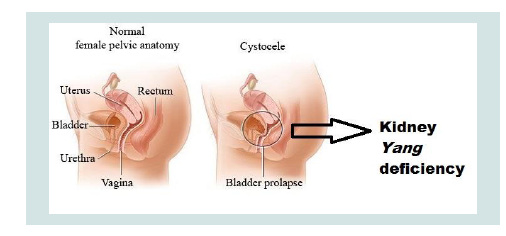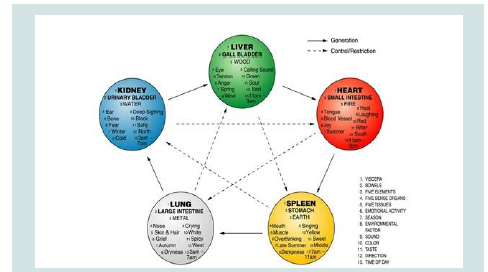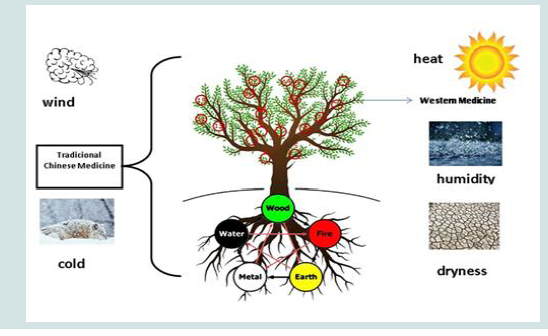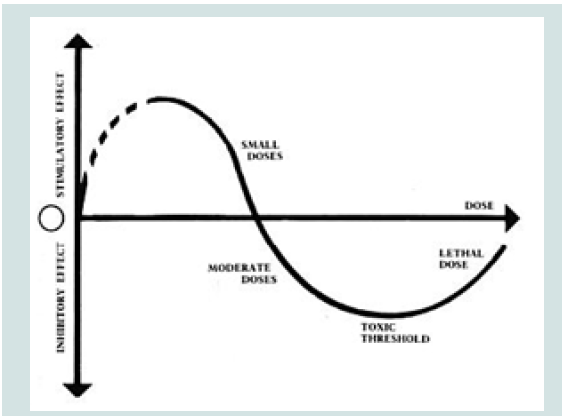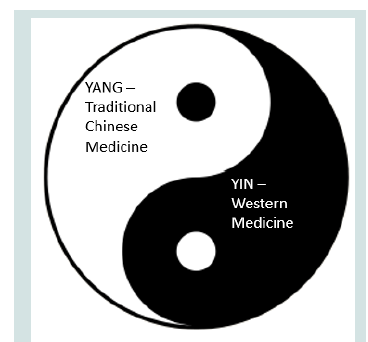Journal of Andrology & Gynaecology
Download PDF
Research Article
How to treat Urinary Incontinence in Women without Surgery?
Huang WL*
Medical Acupuncture and Pain Management Clinic, Brazil
*Address for Correspondence: Ling HW, Infectious Disease Specialist, General Practice, Nutrition Doctor, Acupuncture, Pain Management Specialist, Medical Acupuncture and Pain Management Clinic, Rua Homero Pacheco Alves, 1929, Franca, Sao Paulo, 14400-010, Brazil; E-mail: weilingmg@gmail.com
Submission: 21 August, 2020;
Accepted: 18 September, 2020;
Published: 22 September, 2020
Copyright: © 2020 Huang WL. This is an open access article distributed under the Creative Commons Attribution License, which permits unrestricted use, distribution, and reproduction in any medium, provided the original work is properly cited.
Abstract
Statement of the problem: Urinary incontinence is defined as the
loss of bladder control. In Western medicine, the treatment is hard to
achieve and the need of surgery is common. In traditional Chinese
medicine (TCM), urinary incontinence is caused by Kidney-Yang
deficiency.
Purpose: To demonstrate it is possible to treat urinary incontinence,
without the need of surgery.
Methods: A case report of 55-years-old female patient, with urinary
incontinence for around 30 years. After three years of the birth of
her third and last child, all delivered by vaginal births, the symptoms
appeared when she would sneeze or cough and worsened, requiring
diapers for performing different activities, mainly when she had
contact with water in her feet. Her gynecologist recommended her
for surgery, but she refused for a long time and after years, she tried
another treatment. She was diagnosed with Kidney-Yang deficiency
and Blood deficiency according to TCM. She performed the procedure
of radiesthesia, which resulted in level 1 of 8 in energy, the minimum
possible. She started Chinese dietary therapy, auricular acupuncture,
apex ear bloodletting, moxibustion.
Findings: She had complete improvement of the symptoms in
three Chinese dietary therapy, sessions of acupuncture, homeopathy
and crystal-based medication, not needing to use diapers or sanitary
pats anymore.
Conclusion: Based on this case report, we conclude that it is
possible to treat urinary incontinence without surgery. To this aim,
we need to see the patient as a whole, considering the energy
imbalances, which were causing urinary incontinence, using Chinese
nutritional therapy, acupuncture, moxibustion, homeopathy and
crystal-based medications.
Keywords
Urinary incontinence; Surgery; Traditional Chinese medicine; Acupuncture; Energy; Diet; Moxibustion; Homeopathy; Crystal-based medications; Chakras
Introduction
Urinary incontinence is defined as the loss of bladder control.
The main symptoms are to lose urine when sneezing or coughing,
but the problem can become more serious. Despites being commonly
associated with aging and traumatic childbirth, there are many causes
of urinary incontinence, and many different solutions and treatments
[1-3].
The incontinence has several levels and can be associated with
diuretic liquids in temporary cases, but it can also be permanent and
constant during pregnancy, after childbirth or with aging [1-3].
Childbirth is believed to be one of the main causes of urinary
incontinence. Women who delivered by caesarean sections have less
risk of having urinary incontinence, even though the problem is also
very common for those that did not have vaginal births. In a research
performed by Yongtae Kim, which evaluated 15,307 women, 21% of
those who had vaginal births had long-term urinary incontinence, comparing with 16% of those who had caesarean sections [4].
Other studies showed demonstrated that despite the easiness
in diagnosing the disease, a successful treatment is hard to achieve.
The prevention is complex, maybe because there are other unknown
aspects linked to the pathology, not recognized by current Western
medicine [1-3].
Even with the exercises and other treatments available, the
necessity of surgery is common. Therefore, there are doctors that
would recommend the preference for caesarian sections in order to
try to avoid the problem [5].
According to the article entitled Long-term Results of the TensionFree Vaginal Tape (TVT) Procedure for Surgical Treatment of Female Stress Urinary Incontinence, the urinary incontinence was completely solved in 56% of the cases [6].
The annual cost for women with urinary incontinence in the
United States is around $12.4 billion, with the average woman
spending about $900 each year to deal with the effects of bladder
leakage [7].
Purpose
Demonstrate another way of treating for urinary incontinence,
less aggressive then surgery using acupuncture and other principles of
traditional Chinese medicine.
Methods
The method used in this article was to analyze the literature
available in Western and traditional Chinese medicine, along with the
use of a case report of a 55 years-old patient, E.M.P, married at 23,
with three kids, all them delivered by vaginal births.
The problem started only when she would sneeze or cough.
Within the years the conditions got a lot worse, until the moment
she had to use diapers to perform many activities, especially those
involving water.
When she first started to look for treatment for the condition, it
was already unbearable. Talking to a gynecologist, she was willing to
do the surgery for recovery of the condition. On the same week, she started treatment with the author. At first, she was diagnosed with
Kidney-Yang deficiency and Blood deficiency according to TCM.
After, it was started a treatment for her energy imbalances, first with
Chinese dietary counseling. The diet recommended was to avoid dairy
products, cold beverages (including water), raw food, and sweets. It
was also recommended to avoid coffee, soda and matte tea. She also
started twice a week sessions of auricular acupuncture and apex ear
bloodletting.
Results
After two sessions, the patient started feeling results, within a
month she obtained complete cure of the condition, not requiring the
use of surgery
Discussion
The urinary incontinence is a widespread problem among women,
especially those who had several vaginal births in a short period of
time [4].
The surgery also harms the routine of the patient, the complications
associated with the surgery are also to be considered. On Hippocrates
oath, it is stated “I will not use the knife, not even on sufferers from
stone, but will withdraw in favor of such men as are engaged in this
work”, meaning that it is important to try to treat any disease clinically
is a better option than performing a surgery, when possible [8].
Even though the surgery present good results, the surgical
environment may not be the best recommendation according to
Western medicine, the nosocomial environment is believed to increase
the risk of nosocomial infection and other possible complications [9].
Due to these factors, many women search for different ways of
treatment and cure, and many times the solution can be found in
other ancient traditions, as traditional Chinese medicine.
Western medicine and urinary incontinence:
There are three types of urinary incontinence. The first one is the
SUI or Stress Urinary Incontinence; this type is characterized by the
weakness of pelvic muscles. The main way of cure for SUI is exercises
in order to fortify the pelvic muscles. These exercises are entitled
Kegel exercises [1-6].The second type is the Overactive Bladder or OAB, also called
urgency incontinence. The process of this type of incontinence is miss
signal sent by the brain, which understands that the bladder is needs
to be empty, when it is not completely full yet. The main consequence
is the lack of control of bladder every time the urge to urinate appears
[1-6].
The third type is the mixed incontinence, which happens when
the patient has both SUI and OAB. The patient described in this case
report had mixed incontinence [1-6].
In Western medicine, therapy for urinary incontinence includes
behavioral therapy, physiotherapy (such as Kegel and other similar
exercises), medications and surgery. Duloxetine is the first licensed
drug for the treatment of urinary incontinence, with rates of success
around 66% [1-6].
According to the National Association of Incontinence, the Women’s Health Organization and the American Medical Systems,
nowadays, 25 million adult Americans suffer from some level of
urinary incontinence, and from those 75-80% are women [10].
The problem affects 200 million people worldwide. One in
every four women over the age 18 experience episodes of urinary
incontinence, even when the problem is not persistent. The diagnosis
takes a long a time, and the possibility of surgery only exists when the
woman completely lost the bladder control. Around the world, urinary
incontinence is twice as common in women as in men. Pregnancy,
childbirth and menopause are the major causes of incontinence in
women. Between the ages of 18 to 44, 24% of women will experience
incontinence. For women over age 60, 23% deal with the problem
daily [10].
Traditional Chinese medicine and the causes of urinary incontinence:
In the last decade, many studies aim to certificate the effectiveness
of traditional Chinese medicine in the most varied pathologies. For
treating asthma, allergies and also urinary incontinence, the principles
of traditional Chinese medicine shown themselves as effective ways of
treatment, and their use has been increasing [11,12].The main idea here, is to understand how Western and traditional
Chinese medicines only see the symptoms and signs from two
different perspectives. In the treatment of urinary incontinence, as
TCM aims to see the patient as a whole, the first important step for
treatment is an analysis of the patient historic. For example, a woman
who gave birth to three babies, as the patient being described in this
case report, will be more vulnerable to the urinary incontinence due
to the deficiency of energy of the Kidney and Spleen leading to Blood
deficiency and Yang deficiency resulting in Qi deficiency [13].
These energy deficiencies are well explained in the way postpartum
period is interpreted, and how women should behave in this period
[13].
Kidney and urinary bladder: Yin and Yang and Five Elements theory: In the Yellow Emperor’s Classic of Internal Medicine, it is stated that a good physician, in order to perform a diagnosis of any pathologies has to analyze the symptoms and classify them into Yin and Yang in order to perform the diagnosis. The Bladder, according to the Five Elements theory is the hollow organ related to the Kidneys meridian or massive organ [14].
The Kidney meridian is linked to the Water element and the
emotion of fear. On the same way, Kidney imbalanced can generate
fear as well. When there is a Kidney-Yang deficiency, the Bladder
meridian may suffer, what may reflect as urinary incontinence [13].
The bladder prolapse in Western medicine is associated with the
weakening of the pelvic floor, due to vaginal birth. However, patients
with performed caesarian session also develop urinary incontinence,
as well as patients who did not bear children. On traditional Chinese
medicine, the Yang energy is associated with the ability of keeping the
internal organs “up”, or on their proper place. When there is prolapse
(of bladder, rectum or uterus), this is a symptom associated with
Kidney-Yang deficiency, as it is possible to see on (Figure 1).
The second theory of major importance for traditional Chinese medicine, together with the Yin and Yang theory is the Five Elements
theory. The main objective of this theory is to establish relationship
between the organs, comprehending the patient as whole [15].
In the case of urinary incontinence, the childbirth process and
the loss of energy due to aging can have a negative influence over
the body, causing the pathology. When the Five Elements scheme is
comprehended (Figure 2), the physician will finally be able to see the
body as whole, with interconnections between the body, receiving
external and internal influence, and, with this knowledge in hands, it
will become easier to develop new ways of treatment.
Post-partum period: According to traditional Chinese medicine,
during the birth, there is an exceptional use of energy. A major part
of vital energy, Qi and Yang energy will be applied to bring the baby
to the world. The postpartum therefore, is the moment where their
energies would be more weakened, and their body would be fragile,
being opened to bad energies, emotional and elemental, especially
cold and wind. In order to conserve Qi, the patient is oriented to not
force her eyes and mind. Not engaging in stressful mental activities.
It is also common the orientation to sleep and rest a lot, being able to
heal and become strong again [16].
Therefore, the postpartum is considered to be one of the major
moments of a woman life, regarding the health of the body. Not taking
good care of the body in this period, not resting and not empower
the body in this period can bring serious consequences for the rest
of that woman’s life. The energy issues developed in this period may
take years to appear; only showing symptoms during menopause and
aging, such as urinary incontinence [16].
The first 40 days are a time for rest, recovery and seclusion. The
only function a woman should perform is to take care and feed her
baby. After the birth Yin and Yang are unbalanced because woman
uses much of her Yang energy in the birth. She has also lost Blood
and Qi. She is considered to be internally cooler. Her Yang must be
supported and no cold is allowed near a postpartum woman [16].
When these energies are not replaced by rest and good
alimentation, according to the energy disturbances she is suffering,
these may be one of the causes of energy deficiencies responsible for
urinary incontinence [16].
However, women are not the only ones to have this problem,
and the problem is not only associated with childbirth. According to
TCM, for women and men the main cause of urinary incontinence
is the Spleen and Kidney deficiency, and both deficiencies can be
corrected with:
1. Chinese dietary therapy
2. Acupuncture
3. Moxibustion
4. Homeopathy, according to the theory developed by the author,
entitled Constitutional Homeopathy of the Five Elements based on
Traditional Chinese Medicine [17]
5. Crystal-based medication.
During this period, mothers are encouraged to reinvigorate their
Yang by sipping herbal teas and eating warm, soft, easily digestible
substances that serve to strengthen the Spleen, nourish Blood and Yin
(especially for producing breast milk), and of course build Qi. Ideal
foods include soups, bone broths, congee, cooked vegetables, and
animal protein (if vegetarian, ensuring an abundance of plant-based
protein and iron from legumes, tofu/tempeh, whole grains (quinoa,
oatmeal), plus nuts and seeds [16].
Diagnosis and main causes of energy imbalances:
Diagnosis: In order to make an energy imbalance, the patient is
submitted to the questions proposed in [18-24] (Table 1).Main Causes of Energy Imbalances: The main cause of energy imbalances were already extensively discussed in other articles of the author. They are mainly related to diet, emotional habits, and
exposure to certain external factors (Wind, Cold, Heat, Humidity and
Dryness) [14,15].
Regarding diet, according to traditional Chinese medicine,
foods will have their own energy as well. Some diseases can be easily
cured only making diet changes. As Hippocrates stated: “Make your
food your medicine, and your medicine your food”. This sentence
emphasizes the importance of a correct diet to maintain the health of
the body, and to even cure diseases. As there are foods causing energy
imbalances, there are also diets that can rebalance and restore the
health of the body [14,15].
Foods that cause Spleen-pancreas deficiency are very common in
Western eating habits, such as ingestion of cold water, raw foods, dairy
products and excessive sugar [25]. Foods that cause internal Heat
build-up should be avoided. They are: fried foods, eggs, chocolate,
honey, coconut, alcoholic beverage, dairy products especially when
the cheese is melted, etc. [25].
Regarding the emotions, emotional problems will also influence
the body. Different organs are affected in different ways by different
energies. The Lungs for example, are affected by grief or sadness.
When feeling too sad, pathologies regarding the respiratory system
may appear. Spleen pancreas is affected by excessive worry. The Heart is mostly affected by excessive joy. Liver is affected by anger. Kidney is
affected by fear [14,15].
Regarding external factors, many carries should be applied in
order to avoid the entrance of these external energies in the body.
When suffering from energy deficiencies, the body becomes more
vulnerable to the influence of external energies, continuing the
process of energy deficiencies, creating an unhealthy cycle [14,15].
The main external factors which influence the body are: Heat,
Dampness, Cold, Dryness and Wind, as showed in (Figure 3). This
figure was already explained in other articles of the author, and here
it is exposed only to show the influence of external pathogenic factors
on the state of health and disease. In the same way the tree is exposed,
the human body also is [14,15].
Hippocrates also stated on his study, the importance and influence
of external pathogenic factors on the state of health, as well as the texts
of the Yellow Emperor’s Essential of Medicine [14,15].
Tools for treatment:
Chinese dietary nutrition: Besides from what is recommended
in Western medicine regarding diet, considering calories, vitamins,
etc., the orientation on Chinese dietary nutrition is based on the
energy imbalances of the patient, overlapped with the energy of each
food [25].In the case of the patient described in the case report, she had
a Kidney-Yang deficiency, which is a deficiency on the energy that
warms the body. Because of that, the patient was recommended to
stop eating raw food, as they usually have cold energy. This would
include all the vegetables and fruits with exception of lemon, papaya
and apples. All the other fruits have to boiled or baked before
consumption. In order to neutralize the energy, to not worsen the
internal Cold presented by the patient [25].
Regarding the water intake, the energy of the water is also cold and
because of that, the patient was oriented to drink the water lukewarm,
after boiling on the stove, keeping it on a thermic bottle, in order to
help on the warming process of the body of the patient, improving the
Yang deficiency the patient was presenting [25].
The process of entry of energy on the body happen through the
nutrition absorption, or the Spleen-pancreas meridian. In order to
improve the absorption of nutrient, the patient was recommended
to avoid foods that would imbalance the Spleen-pancreas meridians,
such as dairy products, raw food, cold water and sweets [25].
The other meridian that may be compromising the Kidney
deficiency of the patient was the Liver meridian, the patient was
also oriented to avoid foods that would harm the energy of the Liver
meridian and Gall-bladder, such as honey, coconut, dairy products,
especially when the cheese is melted and alcoholic beverages [25].
The patient was also oriented to avoid foods that would diminish
the energy of the Kidney directly, such as soda, coffee and matte tea
[25].
One example is that the patient on the case report observed that the intake of soda would worsen her symptoms of urinary incontinence, demonstrating the influence of the diet on the results of the treatment [25].
Acupuncture and auricular acupuncture: Another important
feature of traditional Chinese medicine is acupuncture. According to
TCM, the diseases are associated with perturbations in the flow of Qi
energy. The goal of the acupuncture is to restore balance, correcting
perturbations in the flow, using points close to the skin. Acupuncture
is an important part of traditional Chinese medicine and from the
Chinese health culture for more than 2,500 years [14,15].
Acupuncture is considered a medical specialty by the Federal
Medical Council since 1995 [18-24].
Apex ear bloodletting is commonly linked to auricular
acupuncture treatment, and according to TCM, it is believed to take
off Heat retention [18-24].
Moxibustion: Moxibustion is a tool of traditional Chinese
medicine. It is a form of heat therapy in which dried plant materials
called "moxa" are burned on the skin or very near to the skin. According
to traditional Chinese medicine, the moxibustion procedure has the
ability of warming and invigorating the flow of Qi in the body [26].
On the case of the patient described on the case report, she
had Kidney-Yang deficiency, and felt very cold, especially on the
extremities of the body. The main goal of the moxibustion on her case
was to increase the Yang energy, so the patient would feel warmer after
the sessions, meaning an improvement of her general energy state,
and improving the Yang energy, responsible for containing urine, or
prevent urinary incontinence.
Arndt-Schultz Law:
According to the Arndt-Schultz’s law, all drugs in high
concentrations cause a reduction of vital energy, as demonstrated
on (Figure 4). This reduction would generate the patient's energy
weakness and the formation of internal Heat due to energy imbalances In the case of the drugs for urinary incontinence, it would not be
different [18-24].There is a need to have an integral view of the patient, deepening
up to the level of his Yin and Yang energy, to understand, all the
possible phenomena associated with the sick patient, including also
the environment where he is inserted, which are the external factors
that may start the imbalance [18-24].
Yin and Yang metaphor of Western and Traditional Chinese Medicine:
In order to treat patients with urinary incontinence, it is important
to comprehend the importance of the different medical perspectives.
The body is not only physical and constituted by organs and tissues. It
is also formed by energy. In Figure 5, a metaphor of Yin and Yang as
the different kinds of medicine was created by the author. Nowadays,
Western medicine and traditional Chinese medicine are opposite, but
they could be complementary [18-24].Traditional Chinese medicine can be considered as Yang energy,
and Western medicine is considered Yin energy, already materialized.
In the same way of the relationship of the Yin and Yang, traditional
Chinese medicine starts where Western medicine ends, and viceversa. The relationship is not static, but dynamic [18-24].
Conclusion
The conclusion of this study is that it is possible to treat urinary
incontinence clinically, without the necessity of using surgery
To achieve this aim, it is important to understand the energy
imbalances that are on the background of the symptoms of urinary
incontinence, which in TCM, are related to Kidney-Yang deficiency.
This deficiency is not static, but dynamic, and the treatment of
other possible energy deficiencies (Yin, Yang, Qi and Blood), with
changes on the dietary habits (using TCM reasoning), improving the
energy of the patients with auricular acupuncture, moxibustion and
replenishment of the chakras energy with homeopathy and crystalbased medication are possible tools to treat this kind of patient.
The patients that make surgery and present no improvement, or
the symptoms return, may be because the energy imbalances were
not treated. The association between the energy-based treatment and
surgery may also be relevant in cases where the surgery is necessary,
to avoid the relapse on the symptoms.


